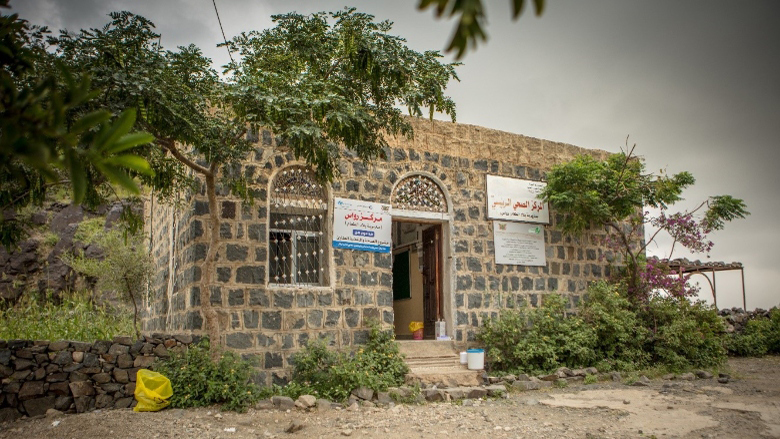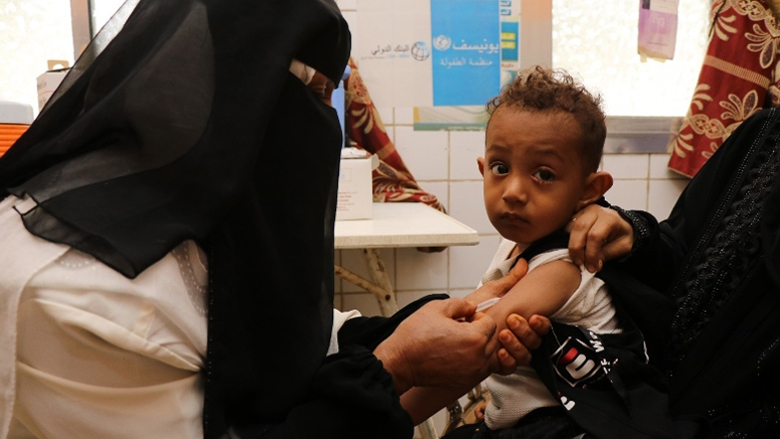Some serious pediatric conditions are being addressed as well. Over 50,000 children worldwide are born each year with a severe form of the blood disorder, thalassemia, an inherited condition that leaves patients fatigued from the lack of an oxygen-carrying protein in their red blood cells. An estimated 80% of cases of this occur in developing countries.
In Yemen, about 700 new cases of thalassemia are diagnosed yearly, with about 50,000 cases on record in all so far, according to an association for the disorder.
Treatment for an inherited disorder
In a country ravaged by war, the optimum treatment of thalassemia is a rare, but much-needed, miracle. Thalassemia patients in Yemen have been provided with lifesaving support through the ENHP funded by the World Bank.
Anas, a bright, 9-year-old boy in third grade at school, is living with thalassemia. He receives a blood bag every three weeks and because of this, he is healthier and able to live life with a smile on his face.
Helping malnourished children recover
The EHNP has been pivotal in the creation of 40 nutrition surveillance system sites. These critical sites help health workers across the country find malnourished children and refer them to facilities where they can get the services needed for their survival.
In 2017, nearly 400,000 children in Yemen were estimated to be suffering from severe acute malnutrition. In 2019, that number had gone down to 360,000, thanks in part to donor support, which is needed still to prevent more childhood malnutrition.
Ebrahim is two years old. Two months earlier, he was frail from severe acute malnutrition with medical complications. Ebrahim’s condition was identified by a community volunteer, who referred his mother to a therapeutic feeding center supported by EHNP.
“We wouldn’t have been able to provide my son with life-saving treatment if it wasn’t for the health worker who told us about the seriousness of his situation and referred us to this center, where we received good care for him. I am thankful to see my son recovered and regain his health. His life has been saved,” said Om Ebrahim.
Rapid response to Coronavirus, COVID-19
Early this month the Bank also rapidly approved emergency funding to mitigate the risks of a potential outbreak of COVID-19 in Yemen. A US$26.9 million grant from the International Development Association (IDA) will finance a new emergency project designed to strengthen Yemen’s fragile systems for public health preparedness, including the detection, containment, diagnosis, and treatment of COVID-19.
Re-stabilizing water and sanitation systems
Disruption to water and sanitation systems has left 16 million people in need of safe water supplies. The ENHP program has provided 2.07 million people with safe drinking water and strengthened sanitation systems for 1.97 million people. Focusing on the sustainability of these systems, it has facilitated the installation of solar panels to help keep water systems working across the country.


